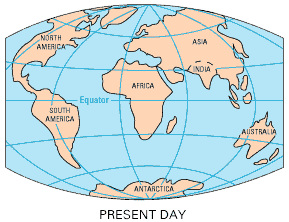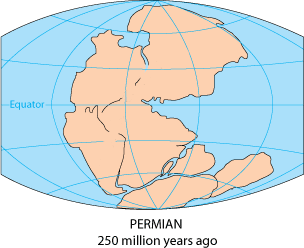Plate Tectonics
This task is about interpreting evidence that scientists use to explain the theory of continental drift.
Continental drift theory states that the continents were once one landmass that broke apart and drifted to the present positions.
These tasks are about the evidence that scientists use to support their theory that Africa and South America were once joined.




